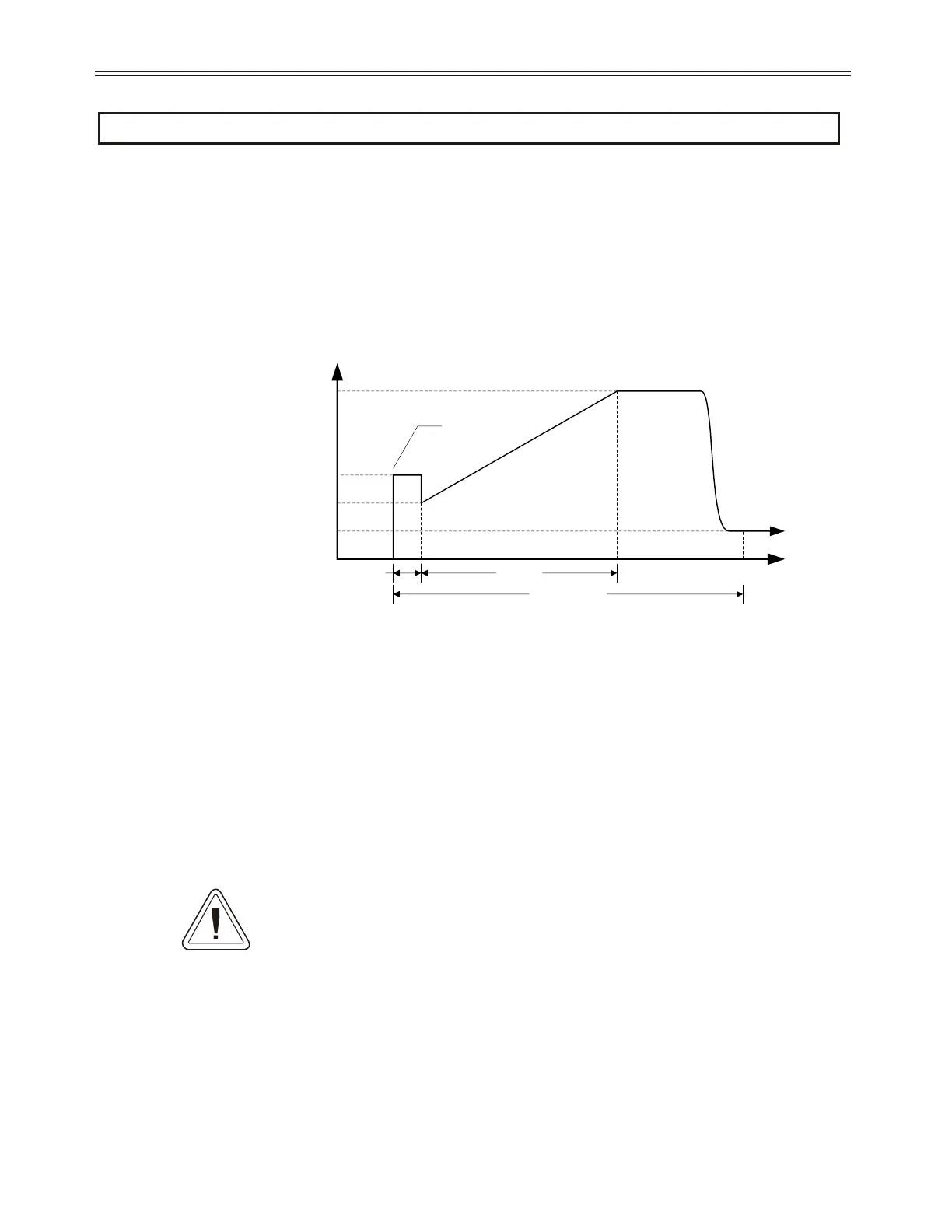Acceleration Control
7.3 Acceleration Control
7.3.1 Current Ramp Settings, Ramps and Times
General The current ramp sets how the motor accelerates. The current ramp is a linear increase in current from the
initial setting to the maximum setting. The ramp time sets the speed of this linear current increase. The
following figure shows the relationships of these different ramp settings.
Initial Current The initial current should be set to the level that allows the motor to begin rotating within a couple of seconds
of receiving a start command.
To adjust the initial current setting, give the starter a run command. Observe the motor to see how long it
takes before it begins rotating and then stop the unit. For every second that the motor doesn't rotate, increase
the initial current by 20%. Typical loads require an initial current in the range of 50% to 175%.
Maximum Current For most applications, the maximum current can be left at 600%. This ensures that enough current is applied
to the motor to accelerate it to full speed.
The maximum current can also be set to a lower current limit. This is usually done to limit the voltage drop
on the power system or to limit the torque the motor produces to help prevent damage to the driven load.
z NOTE: The motor may achieve full speed at any time during the current ramp. This means that the
maximum current setting may not be reached. Therefore, the maximum current setting is the most current that
could ever reach the motor, and not necessarily the maximum current that reaches the motor.
z NOTE: When setting a current limit, the motor must be monitored to ensure that the current is high
enough to allow the motor to reach full speed under worst case load conditions.
140
7 - THEORY OF OPERATION
Current
Time
Kick Time Ramp Time
Up To Speed Timer
Motor FLA
Initial
Current
Kick
Current
Max
Current
Start command
Figure 29: Current Ramp
